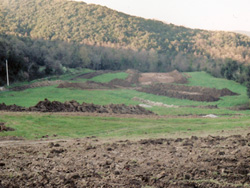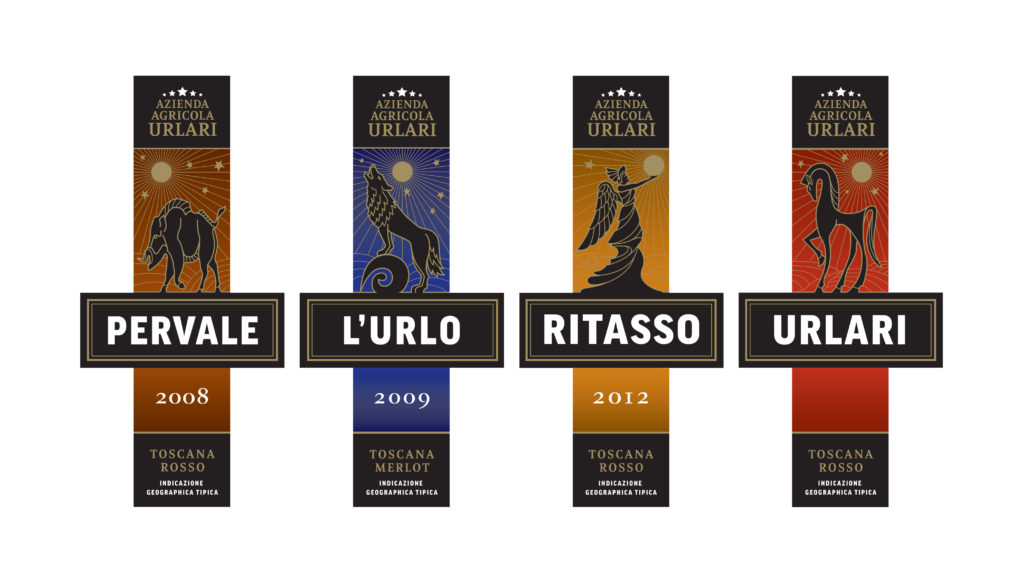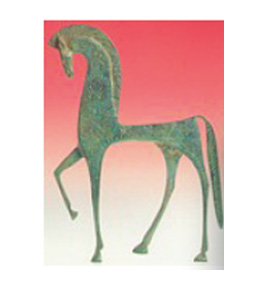Urlari’s labels were inspired by an ancient Etruscan coin that Roberto found as he was preparing to plant Urlari’s fields.


Urlari is located in an area known as the Etruscan Coast, named for the civilization of ancient Italy in the area corresponding roughly to Tuscany. The Etruscans imported the grapevine from the Orient and made the cultivation of the vine an important part of agriculture. The Etruscans planted the grapevines along the sea – so the lands of Maremma and the coastal regions south of Livorno were the first cradle of Tuscan wine.
Archaeological digs in the area have unearthed a number of Etruscan tombs. While the tractors were preparing Urlari’s fields for its first planting, several Etruscan artefacts were discovered including a hairpiece, a coin that was traced to 200 B.C. and auspiciously, shards of a ceramic wine vessel, suggesting a previous, if ancient, history of winemaking on the property.
In researching the Etruscan period, we came across the following passage:
In Ancient Etruscan civilization, it was believed that the changing moon reflects the cycles of nature: its light influencing all growing things – plants, animals, and humans alike – for better and for worse. Like the moon itself, what is empty will, in time, become full again if we are patient.

 A tiny 15th century chapel, is positioned on Urlari’s border. The chapel is part of the estate of Tenuta di Casaglia, owned by Baron di Pauli. The cross-shaped form of Urlari’s labels reference the crosses on the front doors of this chapel.
A tiny 15th century chapel, is positioned on Urlari’s border. The chapel is part of the estate of Tenuta di Casaglia, owned by Baron di Pauli. The cross-shaped form of Urlari’s labels reference the crosses on the front doors of this chapel.
